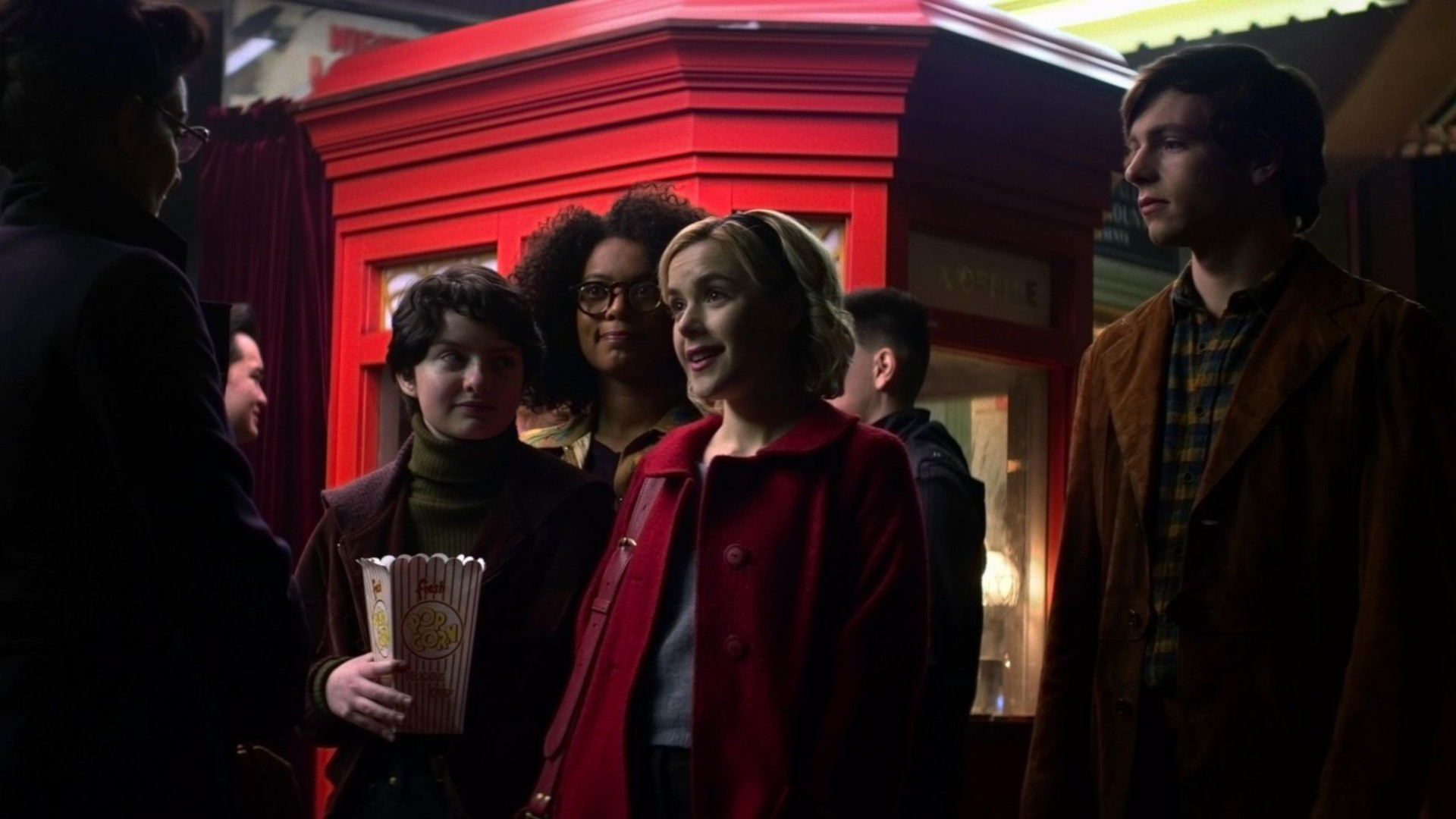Netflix’s newest original series is finally here, just in time for Halloween, and I couldn’t be more excited! As a reader of Archie comics as a kid, a viewer of the Melissa Joan Hart TV series Sabrina the Teenage Witch in the 90s, and as a devout fan of Buffy the Vampire Slayer, I am the living Venn diagram of the audience for this type of content.
We binged the first few episodes and while I haven’t yet seen the whole storyline play out, I’m also pleasantly surprised that one of Sabrina’s best friends on the show, Susie Putnam, is non-binary and is played by an actor who also identifies as non-binary, Lachlan Watson. It’s dually exciting to see this kind of representation not just in the story, but in the cast.
In the first episode Susie is being bullied by some football jocks and Sabrina is quick to jump in to defend and protect her friend. As a parent of an LGBTQ teen, it’s heartwarming to me to see a series tackle the sorts of treatment non-binary teens might face at school, not just from bullies, but from an administration that lacks understanding and sympathy for the journey they’re going through.
In a way, Susie’s story so far mirrors Sabrina’s. Sabrina is half witch, half mortal, and her family is pressuring her hard to choose the witch life, pledge fealty to Satan, and leave the mortal world behind completely. Sabrina stubbornly refuses to let her family force her to choose, and wants to forge a place for herself that’s somewhere between mortal and supernatural. Susie also defies the typical gender binary definition, wants to forge their own identity, and forces the audience to wonder, why should they have to choose one versus the other?
Update: Teen Vogue published a great interview with Lachlan Watson: here.
The series hasn’t totally grabbed me yet – it’s more spooky than I thought it would be, and has less of the humour, warmth, and pop-culture punchiness that I loved so much on Buffy. But I’ll stick with it, if only to reward writers and producers who are putting so much effort into showing a three-dimensional, fleshed out, up-front character whose gender isn’t easily defined, even by themselves.
